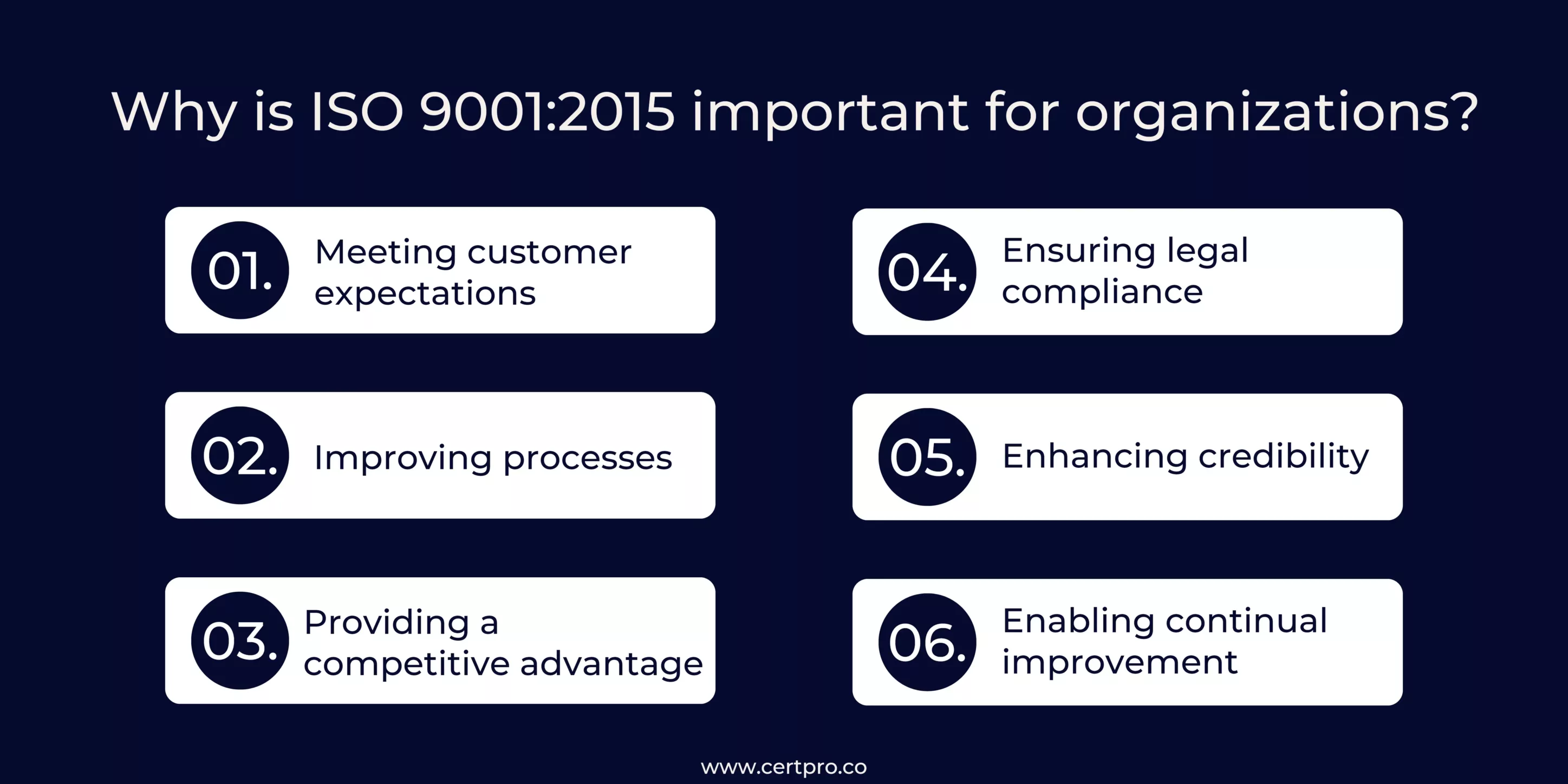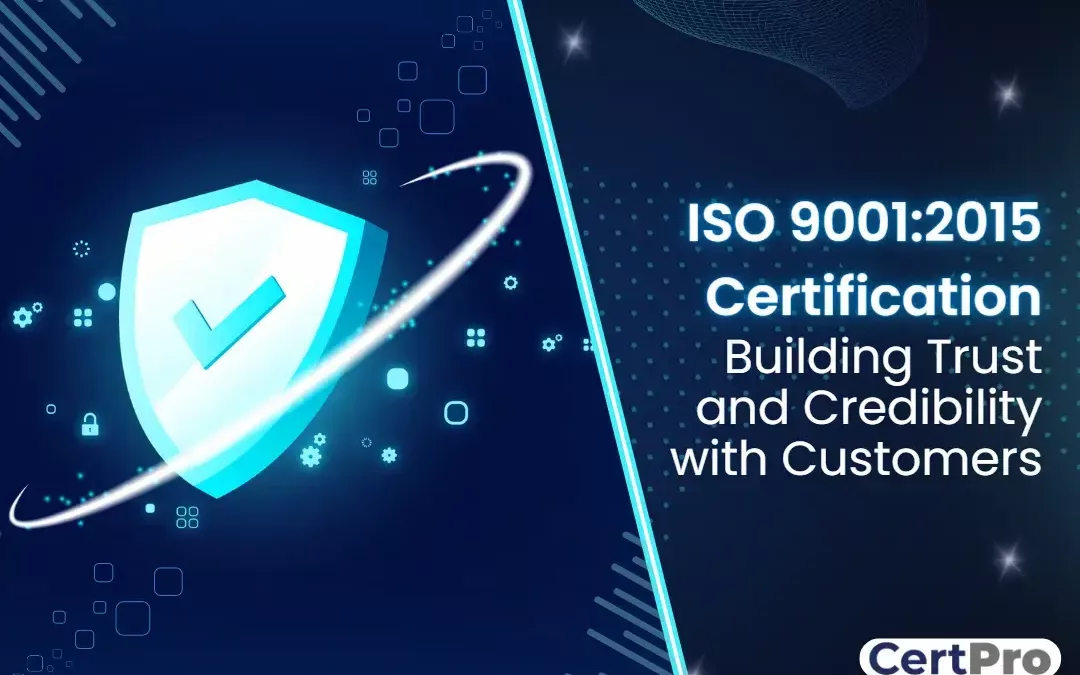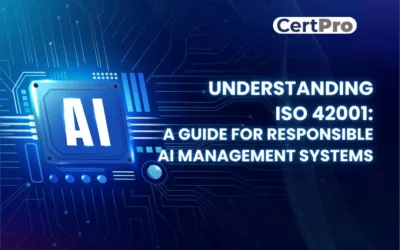ISO 9001:2015 Certification is a standard developed by the International Organization for Standardization (ISO) that provides a framework for organizations to implement a Quality Management System (QMS). A QMS is a set of policies, processes, and procedures used by an organization to ensure that it meets customer needs and expectations consistently. The standard was last revised in 2015, and it replaced the previous version, ISO 9001:2008.
Organizations all over the world use ISO 9001:2015, which is a widely recognized standard. It was developed to help organizations improve their performance by providing a structured approach to managing quality. ISO 9001:2015 places emphasis on a process-oriented approach, meaning that organizations must consistently define and manage their processes to achieve their objectives.
What is the purpose of ISO 9001:2015?
The purpose of ISO 9001:2015 is:
-
- To provide a globally recognized standard for Quality Management Systems (QMS)
- To help organizations consistently meet customer needs and expectations
- To enhance customer satisfaction by providing a framework for continuous improvement
- To be versatile and adjustable, allowing organizations in various industries and sectors to use it as a framework for their Quality Management Systems (QMS).
- To identify and manage risks, improve processes, and increase efficiency.
- To lead to improved performance and increased profitability.
- To provide a basis for continual improvement and responsiveness to changing customer needs and market conditions
- To demonstrate an organization’s commitment to quality and customer satisfaction
- To increase credibility and provide a competitive advantage for organizations that meet the standard’s requirements.
Benefits of ISO 9001:2015:
- Improved customer satisfaction and loyalty
- Improved decision-making through the use of data and evidence
- Increased efficiency and effectiveness through the identification and elimination of inefficiencies and waste
- Improved communication and teamwork within the organization
- Competitive advantage through the demonstration of commitment to quality and customer satisfaction
- Increased employee engagement and motivation
- Compliance with relevant legal and regulatory requirements
Why is ISO 9001:2015 important for organizations?

ISO 9001:2015 is important for an organization because it helps them deliver consistent, high-quality products and services that meet customer needs and expectations while also improving their internal processes and increasing profitability, such as:
- Meeting customer expectations: The standard helps organizations consistently meet customer needs and expectations, enhancing customer satisfaction.
- Improving processes: By implementing the standard’s requirements, organizations can identify and manage risks, improve processes, and increase efficiency, leading to improved performance and increased profitability.
- Providing a competitive advantage: Meeting the standard’s requirements can give organizations a competitive edge by demonstrating their commitment to quality and customer satisfaction.
- Ensuring legal compliance: The standard requires organizations to comply with applicable legal and regulatory requirements, reducing the risk of non-compliance and associated penalties.
- Enhancing credibility: By meeting the standard’s requirements, organizations can increase their credibility and reputation with stakeholders such as customers, suppliers, and regulators.
- Enabling continual improvement: The standard provides a framework for continual improvement, ensuring that organizations remain responsive to changing customer needs and market conditions.
What are the requirements for ISO 9001:2015?
ISO 9001:2015 is a standard that provides requirements for a quality management system (QMS) that an organization can use to consistently meet customer requirements and enhance customer satisfaction. The structure of the standard consists of ten clauses that are organized into three main sections.
Section 1: Scope, Normative References, and Terms and Definitions
This section includes three clauses that provide general information about the standard.
Clause 1: Scope defines the scope of the standard and identifies the QMS requirements that apply to an organization. It clarifies that the standard is not intended to be used for certification, regulatory, or contractual purposes.
Clause 2: Normative References lists the other standards and guidelines that are referenced in ISO 9001:2015, such as ISO 9000 and ISO 14001.
Clause 3: Terms and Definitions provides definitions for the terms used throughout the standard.
Section 2: Context of the Organization
This section includes three clauses that require an organization to understand its internal and external context and the needs and expectations of interested parties.
Clause 4: Context of the Organization requires an organization to determine the internal and external factors that can affect its QMS, as well as the needs and expectations of interested parties, including customers, employees, suppliers, and regulators.
Clause 5: Leadership requires top management to demonstrate leadership and commitment to the QMS, including establishing the quality policy and ensuring its compatibility with the organization’s strategic direction.
Clause 6: Planning requires an organization to plan for the QMS by setting quality objectives, identifying risks and opportunities, and planning changes to the QMS as needed.
Section 3: Operation
This section includes four clauses that address the planning, control, and monitoring of the organization’s processes to ensure that its products and services meet customer requirements.
Clause 7: Support requires an organization to provide the necessary resources and support for the QMS, including competent personnel, infrastructure, and communication.
Clause 8: Operation outlines the requirements for planning, controlling, and monitoring the organization’s processes to ensure that its products and services meet customer requirements.
Clause 9: Performance Evaluation requires an organization to monitor and measure the QMS, analyze data, and evaluate its performance to determine opportunities for improvement.
Clause 10: Improvement requires an organization to continually improve the QMS by implementing corrective and preventive actions, making changes to the QMS, and enhancing its effectiveness.
Overall, the structure of ISO 9001:2015 follows a Plan-Do-Check-Act cycle and emphasizes the importance of understanding the context of the organization, providing strong leadership, planning for the QMS, and continuously improving the QMS. Each clause of the standard plays an important role in ensuring that an organization can effectively implement a QMS and meet customer requirements. By complying with the requirements of the standard, organizations can enhance customer satisfaction, reduce waste and inefficiencies, and improve their overall performance.
Process for ISO 9001:2015 certification:
The ISO 9001:2015 certification process involves several stages.
- Development of a quality management system (QMS): Organizations must develop and implement a QMS that meets the requirements of ISO 9001:2015.
- Internal audit: The organization must conduct an internal audit to ensure that the QMS is effectively implemented and maintained.
- Certification audit: An accredited certification body audits the organization’s QMS to verify that it meets the requirements of ISO 9001:2015.
- Surveillance audit: The certification body conducts regular surveillance audits to ensure that the organization continues to meet the requirements of the standard.
Certification is a continuous process rather than a one-time accomplishment. Organizations must maintain their QMS and undergo regular surveillance audits to maintain their certification. Common misconceptions about certification include the belief that it guarantees quality or eliminates the need for continuous improvement. While certification can be a useful tool for improving quality, it is not a guarantee of quality and does not eliminate the need for ongoing improvement efforts. Additionally, some organizations mistakenly believe that certification is a quick and easy process when, in reality, it requires significant effort and commitment.
Finally, ISO 9001:2015 is a standard that provides a framework for organizations to implement a Quality Management System (QMS) and improve their performance by consistently meeting customer needs and expectations. The standard’s requirements are organized into ten clauses that are organized into three main sections: scope, context of the organization, and operation. By complying with the requirements of the standard, organizations can enhance customer satisfaction, reduce waste and inefficiencies, and improve their overall performance. The benefits of implementing ISO 9001:2015 include improved customer satisfaction and loyalty, increased efficiency and profitability, and enhanced credibility and reputation with stakeholders. Overall, organizations in various industries and sectors can use ISO 9001:2015 as a flexible and adaptable standard to enhance their quality management practices and accomplish their goals.
CertPro: Your Partner for Successful ISO 9001 Certification
CertPro provides valuable auditing and consulting services to organizations seeking certification for standards such as ISO 9001. By partnering with CertPro, businesses can improve their operations and ensure they meet the requirements for certification. The expertise and guidance offered by CertPro can help companies achieve greater efficiency, quality, and customer satisfaction, leading to long-term success and growth. Overall, CertPro’s services are essential for organizations looking to establish themselves as leaders in their industry and demonstrate their commitment to quality and excellence.
FAQ
How can I get ISO 9001:2015 certification for my organization?
Develop and implement a quality management system, conduct an internal audit, engage a certification body, schedule an external audit, and correct any non-conformances to obtain ISO 9001:2015 certification.
What is the processing period for ISO 9001:2015 certification?
The processing period for ISO 9001:2015 certification varies depending on the certification body and the complexity of your organization, but typically takes several weeks to several months.
How much does it cost to get ISO 9001:2015 certification?
The cost of ISO 9001:2015 certification varies depending on the certification body, the size and complexity of your organization, and other factors. It typically ranges from a few thousand to tens of thousands of dollars.
What is the main difference between ISO 9001:2008 and ISO 9001:2015?
The main difference between ISO 9001:2008 and ISO 9001:2015 is the emphasis on risk-based thinking in the latter. ISO 9001:2015 also places more emphasis on leadership, context of the organization, and the importance of understanding and meeting the needs of interested parties.
How often is ISO 9001:2015 certification renewed?
ISO 9001:2015 certification is typically renewed every three years. The certification body will conduct surveillance audits during this time to ensure that the organization is maintaining its quality management system and complying with the ISO 9001:2015 standard.

About the Author
BENEDICT ESSANDOH
Benedict Essandoh, CertPro’s Regional Director in Ghana, is a compliance and ISO standards expert. Specializing in health and safety, he conducts audits, implements ISO 9001 and ISO 45001, and excels in accident investigation and site inspections, ensuring international standards are met.
UNDERSTANDING ISO 42001: A GUIDE FOR RESPONSIBLE AI MANAGEMENT SYSTEMS
The invention of artificial intelligence (AI) has changed the operational processes of many industries. However, the rapid growth of technology increases ethical, security, and privacy-related concerns. Therefore, the International Organization for Standardization...
EUROPEAN UNION’S ARTIFICIAL INTELLIGENCE ACT: HOW THIS GROUNDBREAKING LAW AFFECTS YOUR BUSINESS
Nowadays, Artificial Intelligence (AI) is transforming our lives exceptionally well. AI is now streamlining healthcare services, providing virtual assistance, and fulfilling queries. Technologies have boons and curses. Similarly, AI creates many concerns about...
How to Implement GRC Frameworks in 2024: Step-by-Step Guide
The rapidly evolving business environment, complexity, and accountability enhance the importance of the organization's governance, risk management, and compliance initiatives. Therefore, if your company finds difficulties expanding, recheck your organization's...




